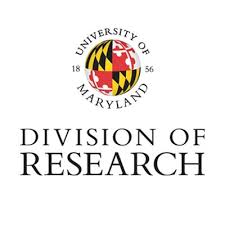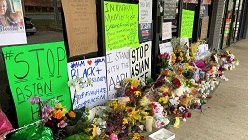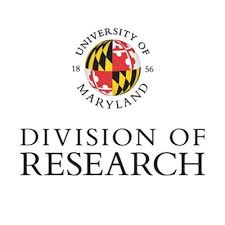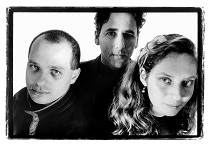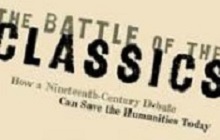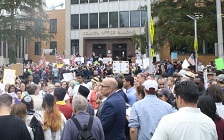By Scott Jaschik
A great debate about the classics took place in American higher education in the 19th century. The debate was about the dominant role of the classics (then), to the exclusion of most other fields. Eric Adler, associate professor of classics at the University of Maryland at College Park, analyzes that debate to look at the humanities today in The Battle of the Classics: How a 19th-Century Debate Can Save the Humanities Today (Oxford University Press). He argues that learning the right lessons about the debate (and no, that's not just to read the Latin and Greek classics) can inform today's debates about the humanities and lead to a more global sense of the humanities.
Adler responded via email to questions about his book.
Q: What were the 19th-century debates about the classics?
A: In early America, study of the masterpieces of ancient Greek and Latin literature in their original languages (which was then synonymous with “the humanities” as a whole) was the linchpin of higher education. Greatly shaped by the tenets of Renaissance humanism, the early American colleges required all their students to study classical masterworks, because it was believed that these works could perfect one’s character and style. These institutions thus saw higher education chiefly as a moral enterprise and believed that the classics enabled the young to improve their character.
Even before the founding of the U.S., this humanist conception of higher education had many detractors. Why, critics wondered, must educated Americans learn the classical languages? And why did the prescribed curricula of the early American colleges provide comparatively scant attention to the natural and social sciences?
Although critics had long demanded answers to these and kindred questions, the fight over the dominant role of the classical languages in U.S. higher learning came to a head in the 19th century, especially in its last few decades. This led to the so-called Battle of the Classics of the 1880s and 1890s, in which the American press devoted great attention to the place of the classical languages in elite U.S. colleges. The “traditionalists” in these debates wanted Latin and Greek to remain required elements of college study. Their opponents, often called “modernists,” by contrast, aimed to end curricular prescription and usher in an elective curriculum inspired by laissez-faire economics and social Darwinism.
Q: What was wrong with the defenses of the classics then?
A: The traditionalistic supporters of the classical languages in the 19th century failed to connect the study of Greek and Latin to Renaissance humanism. Thus, they neglected the chief rationale for the humanities: that they could help people live up to their higher potentialities.
Instead, such traditionalists argued that the classical languages must remain obligatory elements of the American collegiate curriculum because Greek and Latin supposedly offered unparalleled “mental discipline.” Promoters of mental discipline theory conceived of the mind as a sort of muscle. Just as one needs to exercise one’s body in order to grow strong, one must also exercise one’s mind to increase its various faculties. Traditionalists thus contended that the classical languages provided the most effective form of mental gymnastics.
It did not take long for the modernists to debunk these claims. As various social scientists quickly noted, the traditionalists presented scarcely any proof that studying the classical languages was more taxing than studying, say, chemistry or German. To make matters worse, by stressing the importance of “mental discipline,” the traditionalists had unwittingly made social scientists the arbiters of education’s value. Unlike humanists, after all, social scientists could test empirically which subjects most effectively promoted mental discipline. Thus, the traditionalists in the Battle of the Classics were trounced.
Q: How does the 19th-century debate relate to the battles over the humanities today?
A: These earlier disputes are crucial for us to understand now because such instrumental approaches still dominate apologetics for the modern humanities. As I demonstrate in the first chapter of my book, contemporary defenders of the humanities overwhelmingly focus on the modern humanistic disciplines as incubators for something called critical thinking. And as the educational historian David Potts has correctly stressed, “critical thinking” is mental discipline’s “conceptual successor.” Our current defenses of the modern humanistic disciplines, which genuflect to “critical thinking,” suffer from the same flaws detectable in the traditionalists’ defenses of the classical humanities during the Battle of the Classics. Promoters of the humanities desperately need to reconnect their subjects to humanism. We must not only focus on skills, but also on humanistic content -- and what that content can mean for students’ inner lives.
Q: What is wrong with the Great Books as a prism through which to promote liberal education?
A: Promoters of the Great Books approach to general education were understandably disturbed by the antihumanistic curricular anarchy ushered in the U.S. colleges after the fall of the old prescribed classical course. But, like the Renaissance humanists before them, they settled on a curricular foundation that was too narrow to fit the intellectual and moral needs of the present. By grounding general education in the study of Western works alone, they were ignoring major elements of contemporary humanistic study. The Analects of Confucius, African art, Japanese Noh drama -- these and so much more are part of the modern humanities. Why should they be left out of our general education?
Q: What is your vision for the humanities today? And is it a vision for all of the humanities or only for those who want a true liberal arts experience?
A: In the final chapters of my book, I argue in favor of a core curriculum to revive the modern humanities. But, following the educational insights of Irving Babbitt (1865-1933), I insist on a core curriculum that is omnicultural.
Babbitt greatly broadened the humanistic tradition, to allow it to look beyond its classical and Western origins. He did so by stressing what he called the Platonic problem of the One and the Many. Human beings, he noted, are simultaneously all different and all the same. All human traditions, he posited, have contributed to the wisdom of the ages, a nucleus of universal human experience that could help us determine salubrious standards for life. A proper approach to the humanities, then, should center around the study of global masterworks. From such works, we can attempt to detect whether there is a central core of human wisdom that can guide us as we grapple with the best ways to live.
I think that a humanistic education, because it is so crucial to character development, must be experienced by all who aim to lead a serious and fulfilling life. Eschewing character development in favor of strict vocationalism, furthermore, is a danger to society. We cannot presume -- as the pedagogical romantics responsible for the elective system presumed -- that young people will naturally use their pragmatic training for altruistic purposes. As genuine humanists have implicitly noted throughout the centuries, we cannot improve the world if we cannot improve ourselves.


